
Manchester, Home of Mass Spectrometry
Manchester has, throughout the ages, been at the forefront of research and development for the ever-evolving landscape of science and technology. Through both the agricultural and industrial revolutions the contributions made by Manchester are too many to list, from the evolution of the textile industry right through to that of the mass spectrometry instrument manufacturers of today to name but a couple of examples.
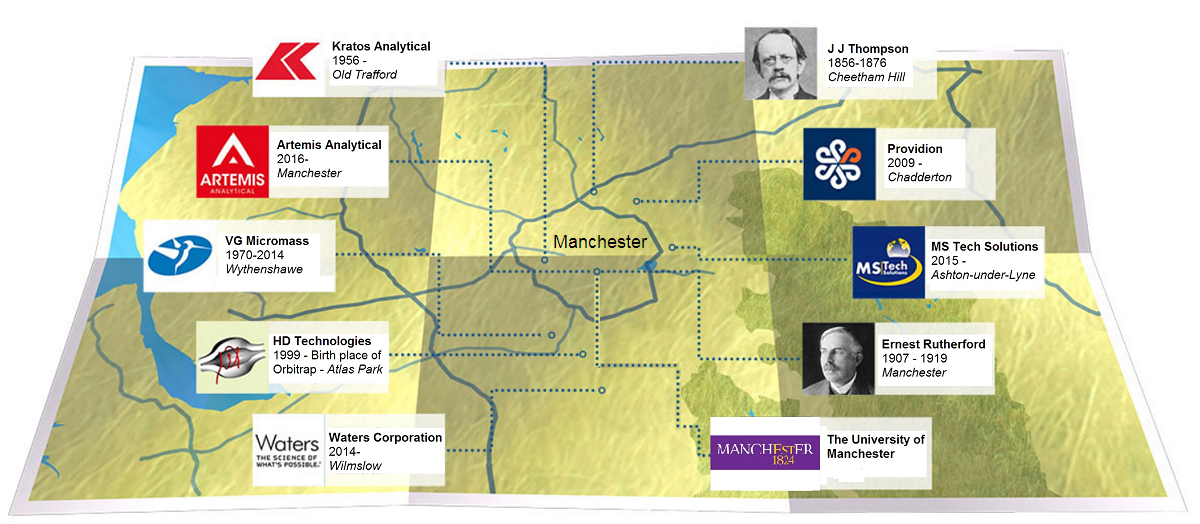
Map of Mass Spectrometry locations in Manchester (Dates for people are for their time spent in Manchester)
John Dalton and Sir Joseph John Thompson
The unified atomic mass unit is named after John Dalton who lived in Manchester during the early 1800s, it was during this time that Dalton conducted several important investigations including his works on atomic theory. The ‘Dalton’ as a unit of atomic mass is often used in mass spectrometry circles, this leads on well to the introduction of Sir Joseph John Thompson who is the Great, Great Grandfather of mass spectrometry and whose name has also been adopted by some as the unit of mass-to-charge ratio (Th). Thompson was a Nobel prize winning physicist born in Manchester in 1856 whose notable achievements included the discovery of the electron and the invention of the mass spectrograph with assistance from Aston in 1912 at the Cavendish laboratory, University of Cambridge. The pioneering mass spectrometry experiments on neon gas led to the discovery of a lower abundance isotope. In the following year the idea of isotopes was simultaneously proposed by Soddy and Fajans through their independent study of radioactive decay chains. Soddy had previously worked with Rutherford, another Nobel laureate, at what is now the University of Manchester back in 1902 on the transmutation of the elements and so the link continues.
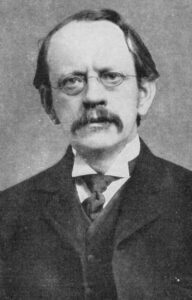
Sir Joseph John Thompson
AEI and the Metropolitan Vickers MS1
The initial collaboration between Thompson and Aston lead to many innovations in the field of mass spectrometry as the technology rapidly evolved in many laboratories around the world. The next major milestone in the list of Manchester mass spectrometry achievements occurred in 1946 with the Metropolitan Vickers electrical company developing the world’s first commercial mass spectrometer outside of the USA known as MS1. The Metrovick company had a diverse portfolio of products ranging from vacuum gauges, large electric motors through to the Lancaster bombers used in the second world war. MS1 was sold to James Chadwick, a physicist at the University of Liverpool who received his Nobel prize in 1935. Chadwick had been credited with the discovery of the neutron 3 years prior, he was born very close to Manchester and was also a student of Rutherford. The MS1 was equipped with an electron ionisation ion source and had a practical m/z range up to 300 Th. Metrovick went on to develop the world’s first commercial double-focusing mass spectrometer known as the MS7 in 1955, along with a whole suite of other products including the infamous MS9. Metrovick became AEI which eventually became Kratos Analytical who are still based in Trafford Park today. The AEI MS30 was the first double beam high resolution magnetic sector that enabled an independent mass scale to be used for peak matching through the use of a lock mass. The double beam instrument was developed by Brian Green who later joined VG Micromass, the origins this technique must have inspired what is now known as the lockSpray ion source used on accurate mass Waters electrspray products.
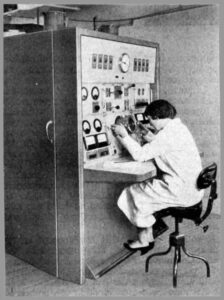
Metropolitan -Vickers MS7 – World’s first commercial double focusing mass spectrometer
1960s – 1970s
Grenville Turner used an AEI magnet on the instrument he developed for the argon-argon dating technique in 1966, this instrument was also named MS1. In 1969 it was used to date the lunar samples returned to earth from the Apollo 11 mission, MS1 was moved to the University of Manchester and is now in the department of earth and environmental sciences.
VG Micromass was formed in 1969 with a staff of 7 including Robert Craig who was a key member of the magnetic sector business at AEI. They developed a variety of small radius magnetic sectors and a TIMS instrument that were used for uranium/plutonium isotope ratio measurements and rubidium-strontium dating of geological samples. By the end of 1972 more than 20 staff had left AEI to join VG Micromass which resulted in the development of a faster scanning magnetic sector that could be used for GC-MS applications. As the demand for high mass resolving power GC-MS instruments that could keep up with quadrupole products increased, fully laminated magnets were developed by a team lead by Brian Green. A decade of mass could be scanned with 10 ppm mass accuracy in 0.1 seconds which resulted in the company receiving the Queens Award for innovation. The new magnet technology was incorporated into the 7070 and ZAB product lines.
It is also important to recognise the influence Manchester has had on the development of countries through the provision of mass spectrometry instrumentation, for example, the very first mass spectrometer purchased by Pakistan in 1974 was a VG Micromass 12 which now has pride of place in the instrumentation museum at the International centre for chemical and biological sciences (ICCBS) at the University of Karachi.
1980s
Until the 1980s, the ion sources available for the analysis of large biomolecules were non-existent, electron ionisation is too hard and it is difficult to volatilise a compound with a mass greater than 500 Da for separation by gas chromatography. In 1981 at the University of Manchester Institute of Science and Technology (UMIST) Michael Barber developed a technique with co-workers known as fast atom bombardment (FAB). This must have been influenced in part through his interest in surface analysis techniques and the research into secondary ion mass spectrometry (SIMS) carried out by John Vickerman’s group also based at UMIST. FAB was born by modifying a primary ion gun originally intended for SIMS to neutralise the primary ions prior to impact on the target where the sample was applied with a glycerol matrix. It was possible using a FAB ion source to ionise large biomolecules such as the protein tripsynogen with a mass of 23,978 Da using the ZAB-SE developed by Brian Green with extended geometry for high mass applications. The introduction of FAB as an ion source option revolutionized the field of mass spectrometry and lead to early peptide sequencing experiments.
The MALDI technique was not far behind, this also employed the use of a matrix modifier in a similar vein to that of glycerol used in FAB. The breakthrough for large biomolecule MALDI MS was made by Koichi Tanaka from Shimadzu who managed to analyse the protein carboxypeptidase-A using a sample matrix modifier consisting of 30 nm cobalt nano particles suspended in glycerol.
The electrospray ionisation technique first proposed by John Fenn was the next big innovation for mass spectrometry; the mass range of this technique is unrivalled. One of the main challenges faced by the instrument manufacturers was the development of an atmospheric pressure inlet, the eventual Micromass solution to this problem still in use today involves dual off-axis orthogonal sampling of the ion beam known as Z-Spray.
Meanwhile Kratos continued with the development of their magnetic sector instruments and were the first to use an electrical array detector in a commercial mass spectrometer, this enabled up to 4% of the mass range to be monitored simultaneously on a 1 inch micro-channel plate that incorporated 1024 channels.
In 1989 VG Elemental developed the PlasmaTrace which became the world’s first high resolution ICP-MS instrument that successfully addressed the issue of isobaric interference.
1990s
Kratos Analytical are a subsidiary of the Shimadzu Corporation with much of the MALDI instrument development work still being carried out in Trafford Park.
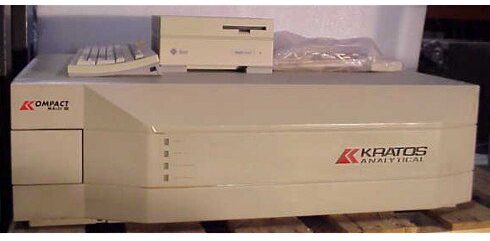
Early 1990s Kratos Kompact MALDI TOF
VG Analytical (aka Micromass) at a similar time also began work on a MALDI product known as the TofSpec led by John Hoyes which incorporated the first time-of-flight mass analyzer developed by the company.
Bob Bateman through his time working at AEI and then VG Analytical was also key to many of the worlds firsts and innovate developments in mass spectrometry instrumentation including the reverse geometry ZAB with a collision cell for ion activation. Bob Bateman also improved the mass range of a 70 70 magnetic sector instrument by changing the ion beams angle of entry into the magnet; if the angle is halved, the radius doubles and the mass rage is extended by a factor of 4. The AutoSpec mass spectrometer with its unique EBE geometry set the gold standard for dioxin analysis was also one of his projects. Bob and Brian Green were both awarded the British Mass Spectrometry Society’s Aston Medal in 2008 and 1996 respectively for outstanding contributions to the field of mass spectrometry.
The requirement for high sensitivity tandem mass spectrometry products resulted in some interesting hybrid instruments developed by VG Analytical and Kratos including the coupling of a quadrupole or even a TOF mass analyzer to the end of an AutoSpec magnetic sector instrument post collision cell. The challenges associate with this development was the necessity to float the final mass analyzer with its associated electronics used for product ion scanning at up to 8 kV to match the AutoSpec’s beam energy.
The first tandem quadrupole instruments including the Quattro 1 and BioQ used a dual detector system that enabled data dependent acquisitions (DDA) to be run. The first quardupole would scan for an ion above a threshold intensity by diverting the ion beam to the first detector before the collision cell. Once triggered the ion optic known as the Altrincham lens would switch the ion beam back on-axis through the collision cell so that a product ion scan could be run on the high intensity pre-cursor ion.
In 1995, the development of the world’s first commercial hybrid quadrupole time-of-flight (QTOF) mass spectrometer was led by John Hoyes and Bob Bateman by coupling a single quad Platform LC mass spectrometer to a TofSpec through a collision cell, this proved to be a game changer with most of the major vendors following suit with their respective offerings. The Micromass QTOF was released at ASMS in Portland, Oregon in 1996 and went on to receive a Queen’s Award for technological achievement in 2000.
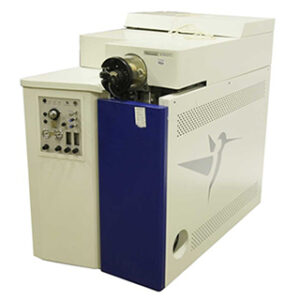
Micromass Q-TOF2 LC-MS/MS, 1998
Meanwhile the research team at Kratos in Trafford Park started work on what would become the world’s first hybrid ion trap time-of-flight (IT-TOF) instrument that was later developed in Japan.
Alexander Makarov joined HD Technologies based in Manchester in the mid-1990s and went on to develop a completely new mass analyzer that later became known as the Orbitrap. The development of the Orbitrap technology using FT-ICR technology with a mass resolving power of more than 150,000 at m/z 195 with no cryogens was revolutionary. It was not long before Thermo acquired HD Technologies but it is interesting to note their location on the Atlas Business park was practically next door to one of the Micromass sites.
Inorganic mass spectrometry also received its fare share of Manchester innovations with the introduction of the VG Analytical Platform ICP elemental mass spectrometer developed by a team led by Jim Speakman. This was the first ICP-MS instrument to use a hexapole collision cell before the quadrupole mass analyzer for the removal of polyatomic interference ions.
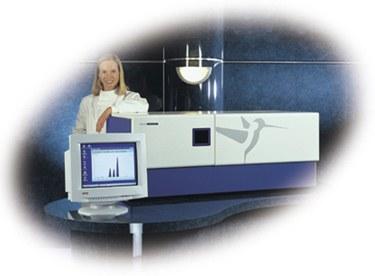
Micromass Platform ICP-MS 1996
2000s
The world of mass spectrometry is a friendly one, however is can be highly competitive when it comes to the speed, sensitivity, selectivity and specificity top trumps game. Competition from overseas has been fraught especially between the Manchester firms and the other big players such as Agilent, Thermo, Bruker and ABI Sciex. As with everything in life there are highs and lows; in 2003 Micromass Uk Ltd. was found guilty in a US court of law of patent infringement due to the differential pumping system employed on the high-end tandem quadrupole instruments (Quattro Ultima) being very similar to that originally developed by ABI Sciex. This resulted in a damage award of $52.6 million in favor of the plaintiff.
The last of those Quattro Ultima instruments including the platinum variant from the early noughties still hold their own in terms of sensitivity with some instruments available today, they are also rock solid with robust electronics and no surface mounted components.
Another innovation available as an option on the Quattro Ultima series of instruments implemented by Brian Green was a 128-bit DAC used to digitise the detector output, with careful calibration and if there was no isobaric interference it was possible to use this quadrupole-based instrument for accurate mass measurements to within <5 ppm.
The next tandem quadrupole instrument to be released by Waters after the Ultima series was the Quattro Premier, it was not possible to use the dual stage differential pumping on the front end but instead the ion transfer optics and collision cell were improved to include a travelling wave ion guide or TWIG. A TWIG consists of a stack of ring electrodes that is used to confine the ion beam with RF, superimposed onto the RF is a DC pulse that propagates through the elements of the optic in the direction of travel on which the ions can surf. The original T-Wave concept used in the Quattro Premier was developed at Waters by Kevin Giles as a fast, high efficiency collision cell with 5 ms dwell times. The Quattro Premier was also the fastest tandem quadrupole instrument at the time capable of switching from positive to negative ion mode in 20 ms which made it possible to acquire both ion modes in a quasi simultaneous manner when analysing a complex multi-residue sample.
T-Wave ion optics later evolved into TriWave technology used for ion mobility spectrometry (IMS), the Waters SYNAPT mass spectrometer was released in 2006 and employed a Q-q-IMS-q-TOF geometry, the addition of the Drift scope software made IMS easily accessible to the masses. The innovative ScanWave collision cell was another world first, used on the Xevo TQ tandem quadrupole instruments it improved the sensitivity of a product ion scan by linking the ejection of the product ions from the ScanWave device with the scanning of the second quadrupole mass analyzer.
Innovations in mass spectrometry also include applications of the technique to answer real world questions. Mike Morris who was supervised for his Ph.D by Michael Barber led the clinical operations team at Waters which developed neonatal screening, thereputic drug monitoring and clinical toxicology applications using mass spectrometry. These techniques are now used routinely around the world and have increased the speed and accuracy of the results when compared to the methods they replaced.
2010s
Once the ABI Sciex patent expired the possibility to use dual stage differential pumping became possible to the other mass spectrometry vendors; this resulted in the release of the Waters Xevo TQ-S that incorporated a StepWave ion guide on the front end to improve sensitivity. The StepWave off-axis ion optic device was developed by David Gordon with Kevin Giles and others and is now used on all the Waters high sensitivity LC-MS/MS product lines.
The contributions made to the field of surface analysis using SIMS at the University of Manchester by John Vickerman’s group which later became Nick Lockyer’s group have also been world leading. These include the first use of gold clusters and C60 as a primary ion beam which have both contributed to improving the sensitivity of SIMS to the analysis of higher molecular weight analytes with less fragmentation. A new SIMS instrument design was conceived by Vickerman known as the J105 3D Chemical Imager this was developed in Manchester in collaboration with Ionoptika and SAI based in Old Trafford who assisted with the design of a novel axial TOF cooler buncher. The latest development to emerge from this group include the invention of a water cluster primary ion gun that again improves sensitivity of the technique to higher mass biomolecules.
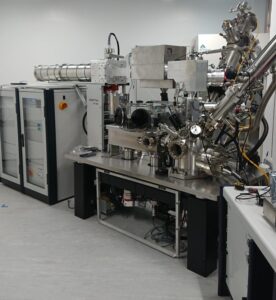
Ionoptika J105 3D Chemical Imager at the University of Manchester
The Michael Barber Centre for Collaborative Mass Spectrometry (MBCCMS) now headed by Perdita Baran develops native mass spectrometry techniques and instrumentation used to investigate conformation, conformational change and aggregation of large biomolecules. Jakub Ujma developed a novel hybrid ion mobility instrument based on a second generation Micromass QTOF which incorporated a high-resolution temperature programmable IMS drift tube with a range from 150-520 K. Bruno Bellina modified a Waters SYNAPT G2-Si to couple laser spectroscopy to ion mobility which was another unique instrument and experimental technique completed in Manchester at the Photon Science Institute.
The Waters Corporation have donated a number of mass spectrometry systems to the Recycling Organisation for Research Opportunities (RORO) charity which has reconditioned them and then installed them at universities in developing countries. This initiative has put the first LC-MS/MS systems (Waters Acquity TQDs) into Ghana and Nepal and other Manchester mass spectrometry products into Pakistan, Ethiopia, Kenya, Oman and Mongolia. The Quattro Ultima systems installed at JKUAT in Kenya along with an LCT donated by the University of Manchester have been used in collaboration with the Royal Society of Chemistry and GSK to train more than 100 scientists from across Africa in practical LC-MS/MS techniques.
Waters later moved their mass spec headquarters to Wilmslow in 2014 which still counts as Manchester; one of the latest evolutionary steps of the TriWave technology is found in the Waters SELECT SERIES cyclic IMS mass spectrometer. The cyclic ion mobility TriWave device took many years to perfect with many scientists working on the project including Kevin Giles and Jakub Ujma who had moved to Waters after completing his PhD. The experimental capabilities possible with cyclic IMS are described in detail elsewhere, they are a world first and recognised as a significant evolutionary step in the field of ion mobility spectrometry.
2020s
The nuclear physics group in the department of physics at the University of Manchester, led by Kieran Flanagan, are now looking to develop bench top instrumentation that will take mass spectrometry to the next level of specificity through its hyphenation to collinear resonance ionisation spectroscopy (CRIS). The CRIS technique has been developed over the years at ISOLDE, CERN for the fast characterisation of exotic radionuclides with low production rates and short half-lives, where every second counts due to the high demand of beam time. Instrumentation currently under development include high abundance sensitivity instrumentation for carbon dating using the CRIS technique. An ICP-MS-CRIS instrument is also being developed for the detection of radionuclides such as strontium-90 which has proved difficult to quantify at the levels required using even the latest ICP-MS/MS techniques.
Manchester is the natural home to many 3rd party mass spectrometry service providers such as Providion and MS Tech Solutions who keep the legacy products up and running.
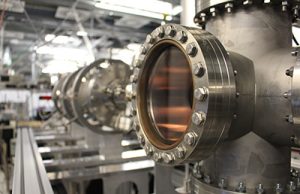
Carbon Dating Instrumentation under development at Artemis Analytical Ltd
The information presented in this blog article has been inspired by the Author’s personal experience with Manchester mass spectrometry products, starting with the completion of a master’s project analysing carotenoids using a brand new Micromass LCT (oaTOF LC/MS) that was installed by Almas Khan almost 20 years ago. Following on from this the same LCT was used almost daily with a Kratos MS25 RFA magnetic sector GC-MS for the next three years when running the mass spectrometry service at Liverpool John Moores University. Five years working for Micromass UK Ltd. (Waters Corporation) ingrained the Manchester mass spectrometry legacy . The latest Manchester mass spectrometry perceptions have originated from experiences gained working and studying at the University of Manchester and more recently with Artemis Analytical Ltd.
Further Reading
‘The History of European Mass Spectrometry‘ book edited by Kieth Jennings includes a brilliant chapter written by Bob Bateman that outlines Manchester’s contributions to mass spectrometry.
‘Science and Technology in Manchester: the Nurture of Mass Spectrometry’ by John Chapman et al.
‘An Appreciation of Brian Green’ by Martin Elliot.
‘The history of Magnetic Sector, Time-of-Flight, Quadrupole Mass Spectrometry at VG – Micromass – Waters’ by Mike Morris et al.
Trackback from your site.



Dr Alan Brown
| #
Thank you for your article on Manchester’s contribution to Mass Spectrometry – it brought back many memories. I was a member of the UMIST SIMS group for ten years from 1977 – 1987. John Vickerman and Michael Barber were my PhD supervisors and I collaborated with John on many publications. After 46 years in Secondary Ion Mass Spectrometry I’m still enjoying it! Best wishes, Alan Brown.
Reply